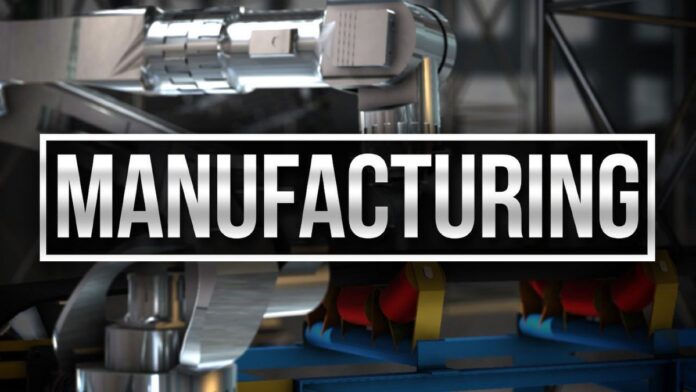BROWNSVILLE —Any discussion on how to attract advanced manufacturing to Brownsville inevitably leads to the workforce conundrum.
Companies that manufacture products using expensive, complex machinery require an adequate number of employees with sufficient education and skills that they can be trained to monitor, maintain and repair such equipment. The problem is, Brownsville, Cameron County and the Rio Grande Valley in general don’t have nearly enough of those people.
It’s a persistent issue and difficult to solve, as economic development officials know all too well. Many serious conversations have taken place about how to fix it, usually focused on somehow tailoring high school and college curriculum to meet manufacturers’ needs.
Gil Salinas, interim executive director of the Greater Brownsville Incentives Corp., said workforce is the “common denominator” in economic development these days.
“It used to be where it was about, ’How much money can you put on the table?’ and is ’Real estate available?’ Now it’s all about, ’Do you have the people and the skillset that we need to be successful, otherwise we won’t touch you with a 10-foot pole,’” he said.
In an interview last month with Mark Kroll about his pending retirement as dean of the University of Texas Rio Grande Valley Vackar College of Business and Entrepreneurship and return to teaching, Kroll was asked whether any progress has been made on the workforce front.
“My answer’s almost a cliché, but you really need a coordinated master plan,” he said. “Everybody’s got their little piece of the pie.”
Local school districts, community colleges and vocational-technical schools, the university, the county and the state are all attacking the problem, though not in a coordinated fashion, Kroll said.
The local workforce is younger than in the rest of the state but also less well-educated, he said. That means a shortage of people with the mid-range skillsets advanced manufacturing operations need — tool and die makers, for instance — as opposed to machine operators or engineers, Kroll said.
“Not everybody needs to be an industrial engineer to get a job, but (workers) are going to have to be able to manage digital control systems and things like that,” he said. “You can’t do that and not know your fractions.”
Kroll, who serves on the Valley International Airport board of directors, noted that FedEx has had trouble filling about 30 new jobs created after the company expanded its cargo operation at VIA.
“Whether or not we’re doing it right, I’m not really sure,” he said. “I guess maybe we’re not, because when (companies) come in they’re not covered up with high-quality applications.”
Efforts to address the workforce issue lack any overarching governance for developing a plan, executing it and holding people accountable, Kroll said. Most important is that the private sector become more involved — such as by providing training equipment that school districts, for instance, can’t afford, he said.
“We need the private sector to engage, and more than just going to a get-together,” Kroll said.
Part of his efforts to promote Bi-national Economic Development, or BiNED, have been about providing a lasting venue for the various stakeholders to get together on workforce development, he said. BiNED’s goal is to cultivate advanced manufacturing along the border as opposed to serving merely as a pass-through economy. The Lower Rio Grande Development Council recently created an official BiNED committee.
“Not to suggest we would usurp local school district boards, but to simply provide an ongoing sustained mechanism for providing that coordination,” Kroll said.
Carlos Marin, Ambiotec Group Inc. principal-in-charge and champion of BiNED, agreed “we haven’t moved the needle very much” on workforce development. The issue is hardly new, he said, adding that the warning signs have been apparent for decades that the region is approaching a critical, inexorable crossroads.
One road leads to prosperity and the other to “continued decline” fueled by a demographic trend that jeopardizes the state’s economic well being: a quickly growing young population coupled with low educational attainment, Marin said.
“We haven’t improved things in 25 years,” he said. “We’ve talked about it. We haven’t really done much about it.”
Marin said the first step is to coordinate workforce development initiatives, though it’s also vital to “align incentives” — train young people for the jobs the region hopes to attract rather than the jobs we already have, Marin said. Public-sector policy also needs to change to reflect this priority, he said.
Workforce development is an issue across the nation, though it’s more serious in the Valley due to low per-capita income, high population-growth rate, and low educational attainment, he said. A weakened workforce means less revenue from economic activity and a population more dependent on social services, Marin said.
There may be hope: Marin is part of a group pushing for creation of a Valley chapter of the Federation for Advanced Manufacturing Education, modeled on KY FAME, a Kentucky program associated with Toyota, Marin said.
“It focuses on the specific problem of advanced manufacturing technicians,” he said. “The technicians — that’s what’s really lacking. We’ve had several meetings with them. We’re in the process of developing that program here and eventually make it statewide. I’m very excited about that. It’s very targeted.”




